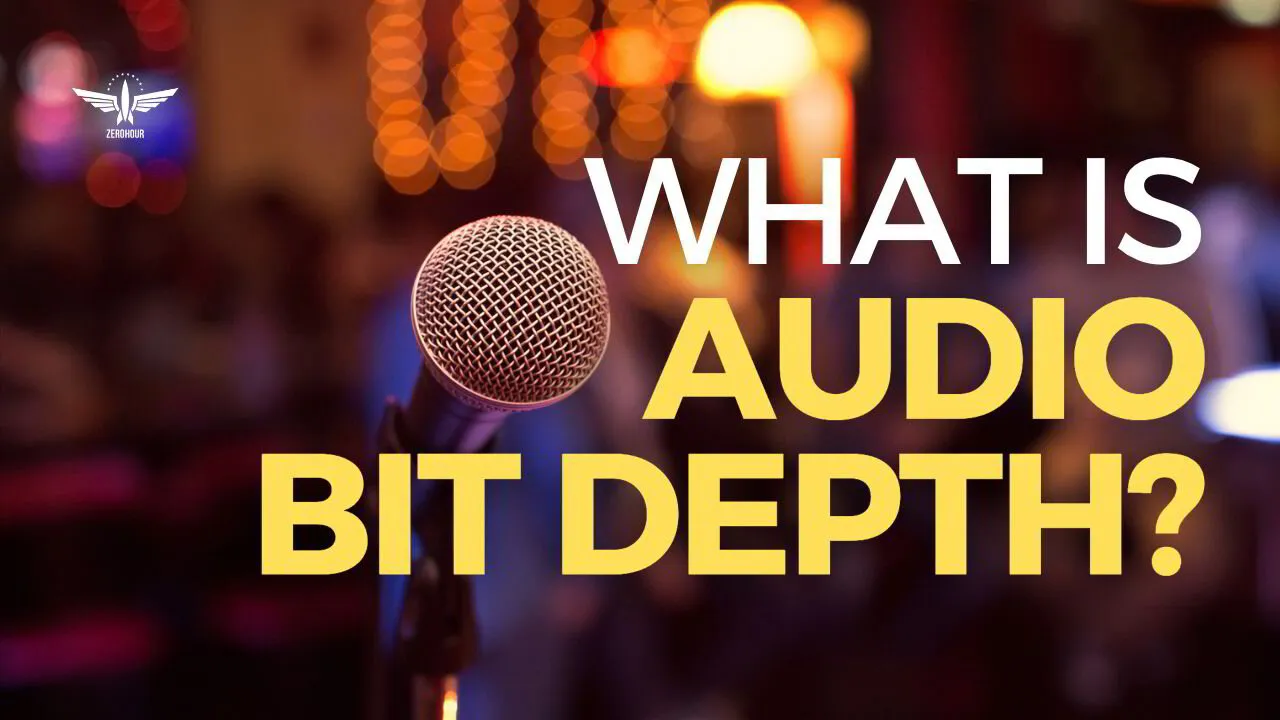Hey it’s Michael from ZeroHour, today we’re thinking about Bit Depth, specifically:
- What it is
- How it affects your recordings
- The recommended bit depth to record at
So let's take a look at Audio Bit Depth…
Firstly, my suggestion is to record at 24-bits. So, if all you needed was a recommendation then you’re sorted. However, if you want to understand more about what ‘audio bit depth’ is and how it affects your recordings then read on.
What is Audio Bit Depth?
By definition, audio bit depth determines the number of possible amplitude values we can record for each sample. Any recorded audio that falls below the possible amplitude values will fall below the noise floor and become inaudible. This process correlates directly with the sampling rate which was covered in a previous post. Read this post here.
In essence, Bit Depth determines the recordable dynamic range. This looks like this:
As you can see, this ranges from 24dB to a ridiculous 1,528dB. For context, every 10dB increase or decrease is perceived as doubling or halving the audio level respectively. So 16-bit onwards gives you a pretty substantial dynamic range.
You Need a Larger Dynamic Range than You Think
Something to be aware of is that the noise floor will be present in any recorded audio, however small it is. Though it will be more audible at lower bit rates. There are a few factors to consider that will affect the perceived noise floor.
These are:
- Processing applied after the audio is recorded
- The required headroom to avoid clipping
- The dynamic range of the recorded audio
This noise floor gets louder as you apply processing, such as compression, after the audio has been recorded. This is because compression is reducing the dynamic range of the audio by reducing the volume of louder moments and increasing the volume of quieter moments. Other processing, such as EQ and Saturation, can also do this but for different reasons.
You also need to consider the actual dynamic range you have after taking headroom into account. Since you don’t want your audio exceeding the loudest level and distorting, you will have to record at a low enough level so that this doesn’t happen. This will reduce available dynamic range by 10dB or more depending on how cautious you want to be.
In addition to this you have to consider the dynamic range of the recorded audio. Your voice and many musical instruments have an extremely large potential dynamic range. This means that if you’re recording a very dynamic part you’ll need even more range to make sure no noise is introduced.
Bit Depth and File Size
Another factor in choosing which Bit Depth to record at is file size. The higher the Bit Depth the more storage you will require. Here’s a chart to show the storage required for different bit depths.
As you can see the file size significantly varies per minute of audio. This can really add up over the course of a recording session.
Take an incredibly sparse recording for example. Say you were recording a 4 minute song with just an acoustic guitar and a vocal with one audio track for each, and you record 3 takes of each throughout the recording process. That would be a total of 24 minutes of audio which would look like this on the chart.
Then compare this to large band production with drums, bass, doubled guitars, keys, vocals, doubled harmonies, extra sound effects, etc. The total recorded audio time between different takes, multiple mics, edits, comps, committing processing, etc. could be around 10 hours or much much more. This would look like this:
You get the idea. This can add up to a lot of storage over time. I’ve had single projects recorded at 24-bit with a sampling rate of 44.1kHz that took up 14GB of space. So you can imagine how large a whole album like this would be. Then take into account if this was recorded at 32-bit.
Distribution Formats
Last thing to take into account is how your music will be distributed. The industry standard for distributed audio is 16-bit and 44.1kHz. At a minimum, your audio should be recorded at these settings. How far you go above is up to you.
The Recommended Bit Depth
Based on all the variables 24 bit recording is the sweet spot. 32-bit would only offer noticeable benefits to industries recording in ultra high fidelity or with massively varying dynamic ranges such as in film recording and ambient sound recording. 16-bit would work but it requires a little more skill during the recording process and would benefit from the use of expensive analog compression to control the dynamic range and avoid adding too much noise floor, especially in larger productions where that noise can stack up.
And of course it’s worth mentioning that recording at the wrong bit depth won’t ruin a great song that’s performed well but it definitely helps the quality and gives you more flexibility when mixing if there is a much lower noise floor. So if you’ve recorded in 16-bit, don’t just scrap it and start again if the performance sounds great!
Final Thoughts
I hope you found this information useful. Ultimately technicalities such as audio bit depth are much less important than the song and performance when it comes to recording but it never does any harm to build on your recording knowledge so that these technicalities don't slow you down.
If you have any thoughts, comments or tips of your own don’t hesitate to get in touch. Learning is made better together. Thanks for reading.
LEARN HOW TO RECORD GREAT VOCALS
Vocals are the heart and soul of every great track, and can distinguish between a professional and an amateur recording.
Whether you record at a studio or at home it's important to learn the steps needed to deliver and record a great vocal.
Download our free guide, this will help you get the perfect vocal take without needing to buy more equipment.
7 STEP VOCAL PRODUCTION FORMULA
Capture The Perfect Vocal Take Every Time, With The Equipment You Have
Click the button below to get your free download






